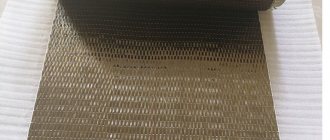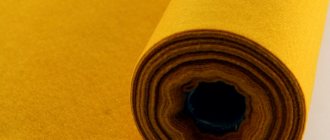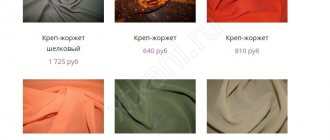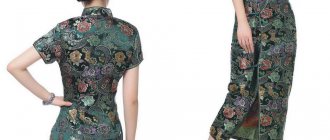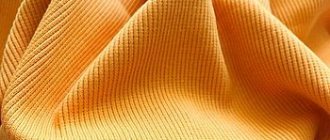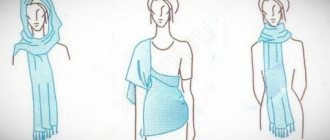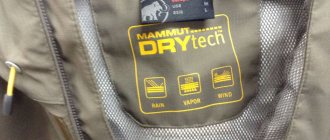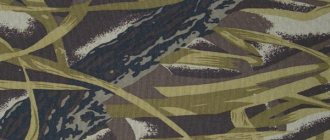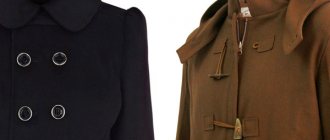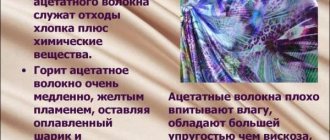What type of fabric is this?
The word "Fleece" in English means wool or sheepskin. Fleece is a fabric material consisting of artificial fibers that is similar to wool. Although fleece fabric was created artificially, it has many advantages. The products are distinguished by their ability to retain heat for a long time.
Fleece colors
Fleece production is impossible without polyester. Fleece jersey is made from polyester material by combing polyester fibers using rotating brushes. The final stage of textile creation is hot steam treatment. After steam treatment, the resulting knitted material is rolled into rolls and sent to factories.
Catalog of fabrics made from artificial fibers
What is fleece made of?
The fabric is made from synthetic microfiber or polyester. Recycled products can also be involved in production: plastic bottles and plastic bags produce the highest quality material.
It turns out that fleece is not only a soft and light fabric, but a great way to take care of the future of our planet!
The finished knitted fabric passes through rollers with hooks that “raise the pile” without pulling the thread. The fabric is covered with loops of polyester fibers in which many air pores are formed.
Ask a Question
Anti-pilling treatment protects the material from the formation of pills, and impregnation with water-repellent and antibacterial compounds improves the consumer qualities of the fabric.
Composition and properties of fleece
The first fleece was made from polyester. Over time, other components began to be added to the fabric. This is how a material with new qualities appeared: the addition of lycra increases the wear resistance of the product, spandex increases elasticity.
Here are the main advantages of this fabric:
- Fleece items are very light;
- clothes do not require special care and do not wrinkle;
- retain color for a long time;
- do not stretch or lose shape;
- retain heat perfectly;
- clothes dry quickly;
- allows air to pass through;
- the fabric is pleasant to the body and does not cause allergies;
- You can embroider your logo and brand name on the fabric
Origin story
Fleece is a young knitwear product that appeared thanks to the American textile company Malden Mills. The year of invention of “artificial sheepskin” is considered to be 1979. Two years later, the new textile material was developed and distributed in many countries. The demand for the new material was high not only in the States, but also in other countries, since the soft fiber was loved by both athletes and people far from sports.
Polyester
Popular synthetic fabric polyester: what is known about its characteristics and areas of application?
more details
Knitwear
Types, characteristics and features of knitwear fabric
more details
What is fleece
Fleece “fabric” appeared at the end of the 20th century. Translated from English fleece - fleece, sheep's wool. The material pleases with its bright design, versatility, and efficiency. It is often compared to microfiber, and the fabrics look similar - fluffy, soft, pleasant to the touch. To understand the difference between the materials, let’s figure out what kind of fabric it is – fleece.
Fleece is a fabric that is produced by knitting. The composition of the material is synthetic, although consumers often wonder whether this is fleece or wool. Woolen fabrics are much more expensive, and they look different - fleece has such a coating that from a distance it resembles textured suede. The material is soft and fluffy to the touch, warms no worse than natural wool - it is warm even in frosty weather.
Fleece fabric is what lovers of winter travel and country walks need. It is difficult to find a more comfortable, affordable and warming material. The canvases delight with a rich palette and have a wide range of applications: from clothing to home textiles. Fleece is considered practical and budget-friendly, for which knitwear is valued by manufacturers of blankets and blankets. Moreover, in these parameters, fleece products are superior to the equally popular microfiber textiles. If we delve deeper into the production technology, microfiber or velsoft can be described as a fleece variety.
Now we know what kind of fabric it is and where it is used. To appreciate fleece products and understand how to care for them, you need to understand the composition of the fabrics.
Fabric composition and properties
The composition of fleece products may vary. It may include components such as:
- spandex;
- windblock;
- bipolarphis;
- lycra.
Lycra
What is Lycra fabric and what are its features? What are the characteristics and areas of use?
more details
Thanks to the listed components, fleece items are characterized by flexibility and elasticity. Fleece does not cause an allergic reaction. Knitwear is durable, wear-resistant, and can retain heat for a long time.
Types and density
By type, the fabric is divided into two groups: by fleece density and composition.
By density:
Polarfleece (microfleece) is the thinnest type of fleece. It is used as a lining on winter and demi-season jackets, thermal underwear, leggings and socks. Its density ranges from 100 to 200 g/sq.m.
Average density (from 200 to 300 g/sq. m). This is a fabric for making lightweight sweatshirts, children's clothing, and gloves.
Dense material (300-400 g/sq. m) is used for sewing blankets, rugs, pillows, sweatshirts and tracksuits.
Ultra-dense fleece (from 400 to 600 g/sq.m) is used when sewing special camping equipment, as well as rugs, blankets, rugs and warm outerwear.
By composition
Although fleece contains only polyester fibers, other threads are often added to it to provide additional improved properties.
The membrane layer between the two layers of fabric provides complete wind protection. This material is often called WindBlock.
Elastane (Lycra) makes fleece elastic and thickens the fabric even more, making it more wear-resistant.
Bipolar fleece fabric consisting of two layers, where the top is water-repellent and the bottom is heat-retaining.
During manufacturing, the fabric undergoes antibacterial treatment. Therefore, you can rest assured that dust mites or fungus caused by dampness will not appear in your clothes.
Types of fabric
Depending on the density of the material:
- microfleece (density below 100 g/sq.m., used for sewing linen and home clothes);
- polar fleece (density 100-200 g/sq.m., used for sewing leggings, thermal underwear, thin sweatshirts);
- fleece fabric of medium density 200-300 g/sq. m., used for the production of children's clothing;
- dense fleece (density 300 to 400 g/sq.m., used for sewing blankets, insulated items, blankets);
- ultra-dense fleece fabric (density 400 to 600 g/sq. m., used for the production of clothing for tourism and equipment).
Depending on the structure of the material:
- water-repellent clothing;
- protects against windy weather;
- fluffy material that retains heat.
Types of fleece
Modern manufacturers offer several types of fleece, differing in several parameters: weight, density, processing and coloring methods - all this affects the appearance and structure of the fabric. The standard canvas has identical sides, but there are double-sided types in which the top layer of material is denser to protect from wind, and the bottom layer is fluffy, having high thermal insulation qualities.
By density
It is impossible to say for sure what kind of fleece it is: thin or thick. There are varieties of material that have different weights, thermal insulation characteristics and thicknesses, depending on density. According to the criterion of specific density, calculated in grams per square meter, the following types of material are distinguished:
- microfleece – up to 100 g/sq.m. m;
- low-density polar fleece – 100 g/sq.m. m;
- medium density – 200 g/sq. m;
- dense – 300 g/sq. m;
- ultra-dense – from 400 to 600 g/sq.m. m.
By processing method
Different processing methods are designed to improve certain properties of fleece. Special compounds are applied to one or both sides of the fabric. Often in modern production the following types of processing are used, by which the material can be classified:
- antibacterial;
- antistatic;
- water-repellent;
- anti-pilling;
- anti-flammable.
By coloring method
The widest range of applications of fleece fabrics dictates the need to use different colors for their dyeing. According to this criterion, two main types are distinguished: smoothly colored (plain) and with drawings applied to it - prints. A variety of designs are used for applying to fabric. You can purchase fleece in camouflage colors, with baby or floral prints and much more. Modern industry is not limited in the choice of colors and patterns for fabric.
- Hair care tips at home
- Is it possible for pregnant women to dye their hair with ammonia-free dye or henna? Hair coloring during pregnancy
- Salad Herring under a fur coat: recipes with photos
Pros and cons of fleece
Pros of the fabric:
- elastic and does not restrict movement, comfortable to wear;
- soft and pleasant to the touch;
- light in weight;
- wear-resistant and durable;
- able to retain heat for a long time;
- does not cause allergic reactions;
- easy to care for;
- dries quickly after washing;
- inexpensive.
In addition to the advantages, fleece material has a number of disadvantages:
- ignites quickly;
- pills often form on knitwear;
- knitwear is subject to electrification;
- collects dust.
Advantages and disadvantages
pros
- Fleece items do not wrinkle.
- Easy to wash and dry quickly.
- They do not need special ironing.
- The body in such clothes breathes and does not sweat.
- Fleece blankets and other products made from this fabric give warmth and comfort.
- In cold weather, a fleece cover is an indispensable item, as the fabric perfectly retains body heat.
- Things are light and do not hinder movements.
Minuses
- Fleece products accumulate static electricity. But this can be easily fixed; you just need to treat the item with an antistatic agent.
- Cheap fabric with long or medium pile often produces pilling.
Children's fleece blankets need to be washed regularly, since the fabric, accumulating static electricity, attracts dust and retains it in its fibers until washed.
Video: comparison of fleece and Polartek fabrics
This video explains the difference between fleece and Polartek, and what material to choose for warm clothing.
See similar articles
- Kulirka - thin cotton fabric for children's clothing
- Bouclé - voluminous fabric with knots on the surface
- Crepe is a light and durable rough textured fabric.
- Lycra is an elastic fabric that fits tightly to the figure.
- Cotton is a popular natural fabric
- Chenille - thick velvety fabric for interiors
If you liked the article, share it with your friends!
Kinds
The main criteria for distinguishing fleece fabrics from each other are fabric density, weaving structure and pile length.
Fleece is divided into groups according to density:
- ultra-thin microfleece - density up to 100 g/m2;
- thin polar fleece - density 100-200 g/m2;
- medium-dense - density 200-300 g/m2, classic, common option;
- dense - 200-300 g/m2;
- ultra-dense - density 400-600 g/m2, for extreme conditions.
The denser the fabric, the warmer the clothing made from it, the higher the weight and volume of the product, but the lower the ability to remove excess heat. Along with a decrease in density, the product becomes light and compact, but its thermal insulation decreases. It is important to decide for what purpose a fleece product is purchased and select the appropriate characteristics.
Single-sided fleece has fluffy pile on one side, suitable for sewing linen and thin sweatshirts. Double-sided fleece on both sides and is used to make warm clothes.
The material is available in a wide variety of colors:
- plain fleece in bright or calm colors;
- printed fleece with designs of various themes on the surface.
Converting polyester fabric into fleece
The polyester fabric with its rough side is pulled over special rotating metal brushes, which pull the fibers out of those very small loops and fluff them up. After this, the treated side becomes soft, fluffy and very similar to what regular fleece looks like.
However, the second side of the canvas is still smooth, so it is pulled again over the rotating brushes, but now the brushes push the fluff from the fluffy surface to the other side of the canvas. Thus, many air pockets are formed on both sides of the fabric, which provide excellent heat-saving properties of fleece.
At the final stage, anti-peeling treatment is performed. Special screw cutters shave off excess lint from the surface of the material, thereby reducing the tendency of the fleece to pill – peeling. At the end of the production process, the fabric is stretched to the desired size and stabilized in this state with hot steam. The fleece is then wound onto rolls and sent to sewing factories. The leader among manufacturers of high-quality fleece is Polartec®.
Application area
A variety of products are made from fleecy fabric. Fleece clothing is more common, and it can be home, casual, or sports. The material is suitable for making toys, hats, accessories and even shoes.
Cloth
For those who appreciate comfort, fleece clothing is an indispensable item in their wardrobe. The range includes warming underwear and hosiery. Fleece is used to make thermal underwear for tourists and hunters. Fleece-lined tights will help out in frosty weather, and fleece-lined leggings are suitable for jogging on a cool morning. Anti-pilling fleece is often used as insulation for winter clothing. Fleece-lined raincoats have proven themselves to be a good option when making outerwear for the off-season.
Purpose and characteristics
Thanks to its unique set of positive characteristics, fleece is indispensable for sports, tourism and everyday use, including by children and teenagers.
Fleece has a low specific weight, products made from it are lightweight and do not hinder movement.
The material is elastic, stretches well and returns to its original shape, does not stretch on the elbows and knees.
Fleece dyes well, has a bright, rich color, does not wear out and does not fade.
The fabric is safe to use and does not cause allergic reactions.
The material is wear-resistant and can withstand numerous washes without losing its appearance. High-quality fleece can not pill or cake for years.
